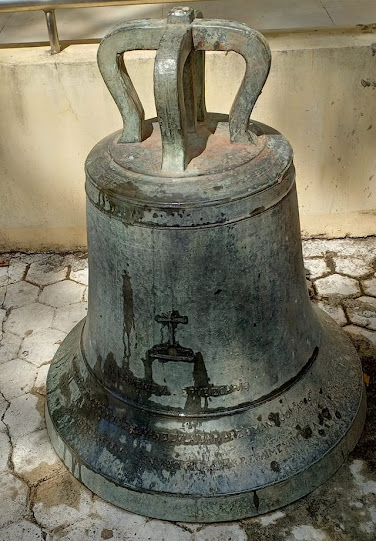Brief History
On June 17, 1961, Republic Act (RA) No. 3138, “An Act Providing for the Establishment of an Emergency Hospital in the Municipality of Santiago, Province of Isabela to be known as the Southern Isabela Emergency Hospital, and Authorizing the Appropriations of Funds Therefor,” was approved. This was championed by Congressman Delfin Albano who sought to establish an emergency hospital in the municipality of Santiago to provide inhabitants therein and its adjacent areas, health facilities, proper medical care and health programs that are not only dedicated to the urban population but also to the people in rural areas.
Southern Isabela Emergency Hospital was established under the management of the local government of Santiago, Isabela to serve the Santiagueños under the leadership of the former Mayor Raymundo “Dodo” Miranda. By virtue of Municipal Council Resolution No. 191 which was promulgated on August 15, 1961, the hospital was allocated with an estimated area of 11,967 sq.m., located east, from the land area originally allocated to the Rosario Elementary School.
On June 1, 1974, the Southern Isabela District Hospital (SIDH), with a 25-bed capacity, was officially founded and took over Southern Isabela Emergency Hospital. This was done in pursuance to section 7-1 (A) of Commonwealth Act no. 246, as amended, and the Special Provisions of the Appropriations Decree for the fiscal year 1974. SIDH started its actual operation on August 1, 1974, and the first Chief of Hospital was Dr. Abraham I. Elefante.
Consequently, Dr. Asuncion “Siony” N. Abaya took over as the Chief of Hospital. In 1993, SIDH was devolved to the Provincial Government Office (PGO) of Isabela by virtue of the Local Government Code. PGO has the direct supervision and fiscal control over the SIDH, however, it still maintained its status as a district hospital.
On August 8, 1997, through the efforts of Congressman Antonio M. Abaya, Republic Act (RA) No. 8338 was passed into law entitled “An Act upgrading the Southern Isabela District Hospital in Santiago City, Province of Isabela into a
Tertiary General Hospital, to be known as the Southern Isabela General Hospital (SIGH), and appropriating funds therefor. “ The Southern Isabela District Hospital was upgraded into a tertiary general hospital under the direct technical and administrative supervision of the Department of Health (DOH).
On August 16, 2002, Dr. Asuncion N. Abaya retired and Dr. Eduardo M. Badua took over as OIC-Chief of Hospital until December 5, 2002.
On December 6, 2002, Jose Ildefonso B. Costales, Jr., MD, MHA, CESE, FICS, was appointed as the new Head of the agency and is currently the Medical Center Chief.
Through the years, the hospital continually upgraded its capacities and services. With the steady influx of patients, SIGH responded gradually increasing its implementing capacity to 50-bed capacity. SIGH increased its bed-capacity to 150, Level 1 hospital, when Congressman Anthony Miranda donated a two-story building in memory of his mother, Rita Miranda, and father, Dodo Miranda, former Mayor of Santiago.
In September 2014, through the collaborative efforts of SIGH officials and key personnel headed by Dr. Jose Ildefonso B. Costales, Jr., Dr. Roselyn L. Dadural, Head of Medical Division, Ms. Eugenia V. Pinera, Head of Nursing Division and Mr. Ronaldo C. Callang, Head of Administrative Division, crafted the Implementing Rules and Regulations (IRR) of the RA No. 8338 and submitted to the Department of Health.
Subsequently, through the sponsorship and persistent initiative of Congressman Giorgidi B. Aggabao, the IRR through the DOH Administrative Order No. 2015-0018 of the RA No. 8338 was issued, thereby paving the eventual upsizing of the bed capacity of SIGH to 200-Bed Capacity, Level 2 Hospital.
On December 11, 2014, SIGH was certified ISO 9001:2008 for the provision of total hospital services, and on January 30, 2017, it was awarded ISO 9001:2015 by the Certification International Philippines (a company of SOCOTEC). On December 20, 2017, SIGH successfully passed the re-assessment and was re-certified ISO 9001:2015.
Further, Congresswoman Ma. Lourdes Aggabao,
On September 28, 2018, the Hospital was upgraded through RA No. 11082, “An Act Upgrading the Southern Isabela General Hospital in Santiago City, Province of Isabela into a Tertiary General Hospital to be known as the Southern Isabela Medical Center and Appropriating Funds Therefor,” as authored by former Rep. Ma. Lourdes “Manay Nettie” R. Aggabao. The Act mandates SIMC to operate and continuously upgrade to be a fully operational 350 bed Level 3 Medical Center.
In February 2019, the Hospital was able to officially acquire its License to Operate for FY 2019 as Level 3 – 350 Bed Capacity Hospital.
On October 18, 2019, the SIMC again successfully passed ISO 9001:2015 re-certification.
Today, it is already operating as Level 3- 350 Bed Capacity Hospital with accredited Medical Residency Training Programs and deemed as the end referral institution of all lower level healthcare facilities in the province of Isabela and the adjacent provinces of Quirino, Nueva Vizcaya, Ifugao and Mountain Province.
TEXT AND PHOTO SOURCE: https://simc.doh.gov.ph/
Old Photo Source: Johnlery Pengco

.png)



.png)
.jpg)

.jpg)
.jpg)














.jpg)
.png)
























